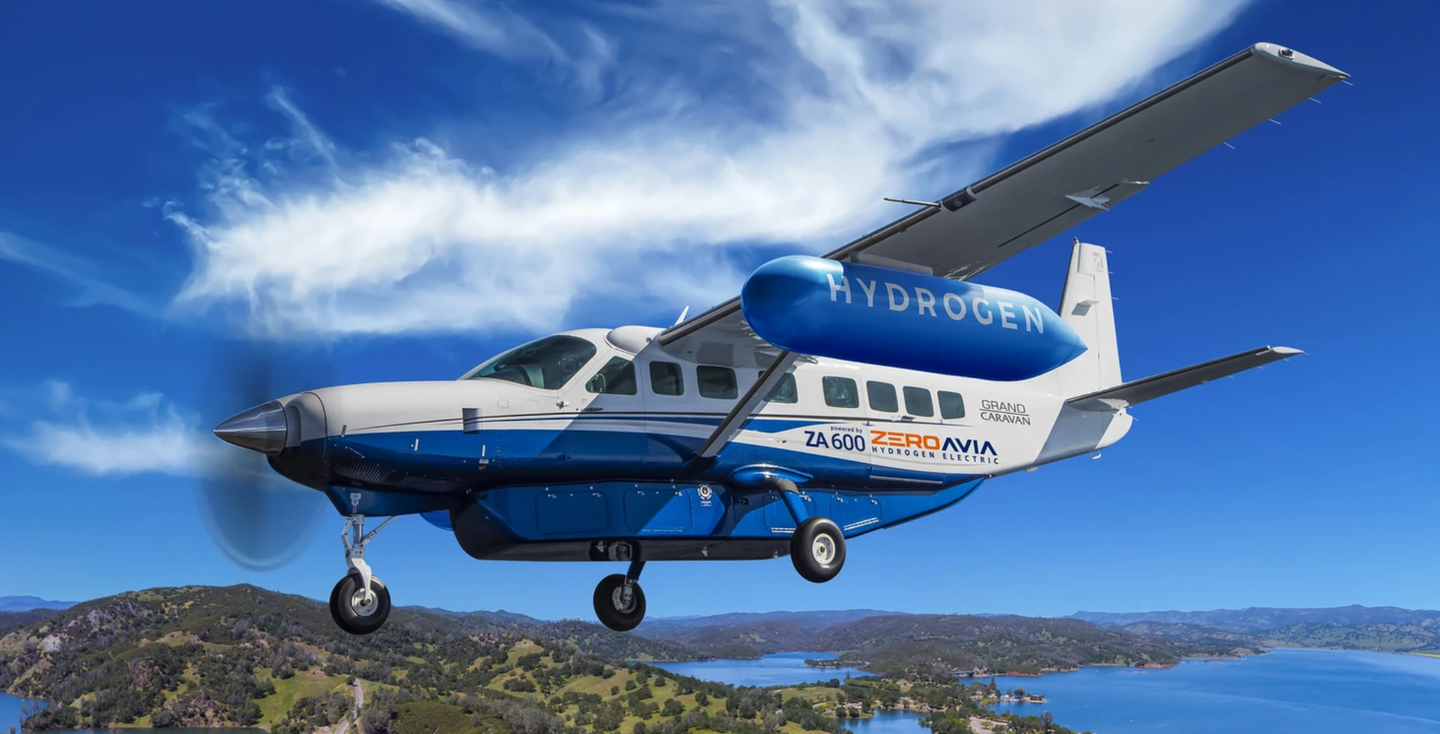ZeroAvia and Textron to Build Hydrogen-Electric Engine for Cessna Grand Caravan
ZeroAvia will obtain an STC for the Grand Caravan turboprop and its ZA600 zero-emission powertrain.

The Hydrogen-electric comany will obtain a Supplemental Type Certificate to transform the popular single-engine turboprop to zero-emission aircraft. [Courtesy: ZeroAvia]
ZeroAvia and Textron Aviation (NYSE: TXT) are working to build a hydrogen-electric powertrain for the Cessna Grand Caravan. ZeroAvia, the fast-growing hydrogen electric aviation company, announced this morning that it signed a non-exclusive agreement with the major OEM to transform the ubiquitous single-engine utility turboprop manufactured by Textron Aviation into a zero-emission aircraft.
ZeroAvia will obtain a supplemental type certificate (STC) to retrofit the Grand Caravan with its ZA600 zero-emission powertrain. This would allow the company to target commercial passenger and cargo operators to adopt its powerplant solution, which it says will be more environmentally friendly and quieter than conventional propeller-driven aircraft.
Val Miftakhov, the founder and CEO of the UK and U.S.-based company, expressed enthusiasm for this expanded partnership with Textron Aviation, providing a platform for his company to test and launch its products.
“The famous Cessna Grand Caravan is on track to be one of the first airframes operating commercial services—both cargo and passenger—with hydrogen-electric, zero-emission engines,” Miftakhov said. “We applaud the visionary leadership of Textron Aviation in joining us to help transform a much-loved mainstay of sub-regional aviation into a symbol of a sustainable transformation in aviation.”
Expanding Partnership Network
This partnership with Textron Aviation joins the network of other aircraft OEMs and operators that have committed to using ZeroAvia’s powertrain technology for future purposes. The company plans to build the ZA600 hydrogen-electric powerplant that targets 9- to 19-seat aircraft operating over a 300-nm mission by 2025. After that, it wants to launch a higher-powered engine, the ZA2000.
A pair of the ZA2000s will allow a 40- to 80-seat aircraft to fly cargo and passengers up to 700-nm and be operational by 2027, the company said.
So far, ZeroAvia has partnered with Dornier to retrofit a 19-seat Do 228 with its powerplant. That is taking place at the ZeroAvia R&D location at the Cotswold Airport (EGBP) in the UK, and the company said in its statement that it hopes to make test flights in a matter of weeks.
Every Expert Isn’t Sold on Hydrogen–Yet
Though some energy stakeholders question the viability of hydrogen-electric powertrains to significantly reduce carbon emissions compared to alternatives like sustainable aviation fuel (SAF), ZeroAvia says its project is a “practical, holistic, and economically attractive solution to aviation’s growing climate change impact.” The engines use fuel cells to generate electricity, which powers electric motors to turn the propeller(s). ZeroAvia says hydrogen-electric systems produce only water vapor as a by-product at temperatures that enable the management of contrails.
In order to reduce emissions to meet an industry-touted 2050 net-zero goal, SAF would be needed to cut up to 65 percent of emissions, International Air Transport Association (IATA) said in a study released last October. Electric and hydrogen solutions would only contribute 13 percent to the desired reduction, the report said. However, it is essential to note that according to the International Energy Agency, at present, operators globally use less than 0.1 percent of SAF, because it remains in short supply. Therefore, if ZeroAvia can meet its deadline—though it supposedly has a smaller market share—its solution could be more immediate.

Sign-up for newsletters & special offers!
Get the latest FLYING stories & special offers delivered directly to your inbox






